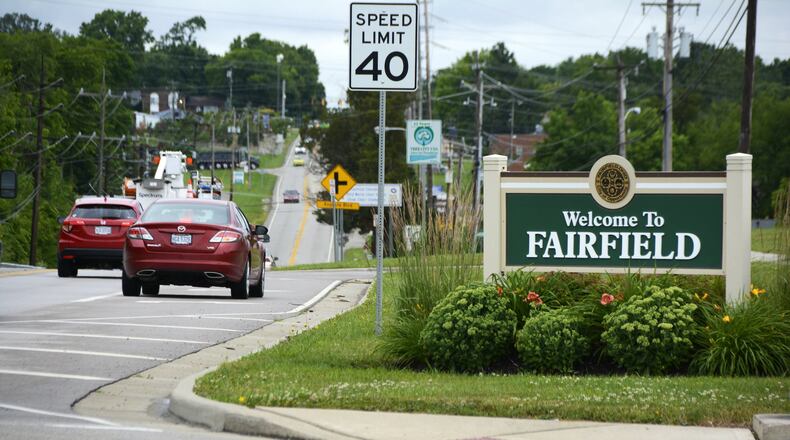Revenues for the city come from four main sources — income tax, charges for service, property tax and state taxes — which account for 81 percent of all revenues. The majority of Fairfield’s expenditures (79 percent) come from public safety, public utilities, general government, and public health and welfare.
RELATED: The GM plant’s closure three decades ago put Fairfield on the brink. Here’s how it clawed back.
“Some of the impacts on our budget, of course we have the economy — income tax and the business environment are huge players in this budget process,” said Timmer. “Fairfield is lucky to have a very diverse tax base, which has allowed us to continue to be successful and continue to increase our income tax revenues.”
The city recently presented four budgets, for the Fairfield Municipal Court, police, public utilities and public works.
The police department’s $13.6 million budget is a 5.1 percent increase, which doesn’t include the anticipated $250,000 Fairfield Schools reimbursement for two new school resource officer positions.
The city announced earlier this year it would double its school resource officers, one each in the high school, freshman school and two middle schools.
RELATED: Fairfield doubling officers in city schools for the upcoming year
The department has four openings for new police officers — one of which opened at the end of last month with an officer retirement. The police budget includes sending three police officers to the academy at Butler Tech for training.
“If we are lucky, we will find excellent candidates that are already certified, and we won’t have to spend any money,” said police chief Steve Maynard. “But if they are not certified, we will have to send them to the academy.”
Maynard said the department has been “very active” in recruitment to attract “those excellent candidates that everyone is fighting for in today’s market in law enforcement.”
The department will also increase its allocation by $5,000 to the Hamilton-Fairfield SWAT Team. The city has paid $10,000 since 2005.
The Fairfield Municipal Court’s anticipated 2020 budget is $2.56 million, with nearly $2 million spent on court-based services, such as personnel and legal services. The budget will include a new part-time magistrate, which was requested by Judge Joyce Campbell and approved by the council last month.
The part-time magistrate will help with arraignments and traffic cases, as well as fill in for the judge when she’s out of town or on vacation.
Public utilities, which is funded by water and sewer service fees, is expected to spend $13.75 million in 2020, with $7.1 million spent on sewer projects.
Next year is expected to be a “planning year” for the utilities department, Sackenheim previously told the Journal-News.
He said the department will be paying “a little bit more” — about $75,000 — at the water plant for a “proactive” maintenance program, and will decrease its utilities and chemical line items, a total of about $50,000.
“We’re paying a little bit more with proactive maintenance, and we’re pushing some creative, cutting edge technologies to improve our efficiencies in how we treat and pump water,” Sackenheim said. “We’re going to reduce our chemicals, we’re going to reduce our electricity, but we are going to have some additional maintenance costs.”
Sackenheim said there would also be a new utility rate study conducted in 2020, which comes several years after the last study that resulted in a four-year rate increase schedule that ends next year.
He said the current rate-increase schedule has allowed the city to be “aggressive” with capital projects, which helped pay for several projects, including the Ohio 4 water main replacement, and water main projects on Seward Road, Donald Drive, and Mack and Ross roads.
City residents can expect a 6 percent and 5 percent, respectively, for water and sewer fees in 2020.
“We still provide a great value to our customers,” Sackenheim said. “Our average residential water and sewer bill is $50 a month, not including trash.”
The city is 13th out of 63 jurisdictions that provide water and sewer services in Southwest Ohio, according to the annual Oakwood study.
The city’s public works department’s 2020 anticipated budget is just under $6.4 million, which is less than a 2 percent increase over 2019.
Public Works Director Dave Butsch said there will be more than 24 lane miles paved in 2020.
The city had fallen behind in road paving because of the Ohio 4 repaving project in 2018, but Butsch said “the plan is to follow a certain number of roads every year. The program next year will be a little bit bigger than this year.”
About the Author

